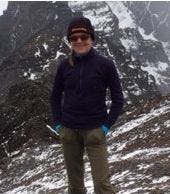Sourdough Library preserves baking heritage, bolsters innovation
Karl De Smedt, head of the Puratos Sourdough Institute, manages the world's only Sourdough Library in Belgium, which safeguards diverse cultures for research and supports global bakers by preserving heritage and advancing science.

At a Glance
- The Puratos Sourdough Library collects and analyzes sourdough cultures from around the world.
- The library supports bakers globally by providing backup cultures and sharing insights on sourdough.
- Puratos aims not only to protect and research sourdough, but also to inspire others by sharing knowledge.
The dark days of lockdown may’ve done a number on restaurants and commercial gyms, but they were boom times for sourdough.
Cooped up inside with little to do but confront their own survival, consumers came to realize they didn’t know how to feed themselves. And so they baked.
Few observed this phenomenon with keener interest — or delight — than Karl De Smedt, head of the Puratos Sourdough Institute and chief librarian of its Sourdough Library.
“Everybody was at home,” he recalled. “They had time. They didn’t have access to yeast in the supermarkets because there was a scarcity. Then everybody started to Google, ‘What is sourdough?’ and ‘How to make bread without yeast?’” Searches for “sourdough” grew fivefold during the pandemic’s first few months.
So, sure, “COVID put sourdough on the map like never before,” De Smedt said. “But we’d been working on sourdough for many years before and opened the Sourdough Library to understand this amazing ingredient that’d been lost for so long within the world of baking.”
What they’ve found reveals not just how cultures shape baking, but how they shape culture.

Sourdough rising
Sourdough’s cultural currency offers a classic case of what’s old rising new again — and with good reason: The fermentation responsible for making sourdough sour is, arguably, also responsible for making us human.
“There’s an American writer named David Rains Wallace,” De Smedt explained, “and he has this quote, ‘Fermentation may have been a greater discovery than fire.’ And that is an amazing quote about human history, because it’s true.”
Indeed, just as humans harnessed fire’s heat to make food safe, we harnessed fermentation’s chemical transformations to accomplish the same — and, in the process, set off a cascade of ancillary reactions with benefits of their own.
Fermentation creates flavor, it preserves — it even preempts digestion. “That’s why we have a microbiome,” De Smedt noted, “to help take care of digestion. It’s the same when fermentation occurs: We’re preparing our bodies to absorb the most from what we eat. It’s like alchemy — turning nothing into gold.”
The flavor factor
And it’s right in line with the wellness and “heal-thyself” themes driving consumer sentiment today.
But for Puratos — a multinational corporation supplying ingredients to the largest baking operations in the world — embracing the alchemy of sourdough aligns with its corporate goals.
“The history of sourdough within Puratos goes back to 1984,” De Smedt said, as that was when the company’s scientists first investigated the feasibility of producing commercial sourdough as a flavoring agent.
Ten years later, “We started to sell straight sourdough ingredients to our customers while also using them within our own products to add flavor and create superior product ranges,” he said. “Little by little, the message of sourdough spread through word of mouth like wildfire. Today, we’re producing in 14 countries.”
Ode to dough
De Smedt and colleagues knew that sourdough’s value extended beyond flavor, touching on everything from health to history. And so “a natural evolution occurred,” he said, “that made us more aware of the 360-degree things that sourdough can do, apart from bringing taste.”
The physical manifestation of that awareness — and of sourdough’s significance — stands in Sankt Vith, Belgium, where Puratos built the world’s only Sourdough Library. Since its inauguration in 2013, it’s protected, preserved and probed the biodiversity of the world’s sourdoughs, collecting live samples to maintain not just for posterity, but for the lessons they teach.
Collaborative collection
Like a modern-day explorer, De Smedt scours the world for these cultures. But Puratos also solicits them through its collaborative sourdough database, Quest for Sourdough, to which baking pros and pikers alike can register the particulars of their personal sourdough cultures: “what they are, what kind of flour they use, where they come from, their age, their history, whatever,” De Smedt said.
“Based on that, each year we select a few sourdoughs to add to our collection,” he continued. “And once we have an agreement, we collect the culture and a bag of flour for the first year of refreshment.”
That’s because De Smedt must “feed” these living foods every two months. “Each month I do half and then the next month the other half,” he said. “I always invite journalists to help so they can see how and why we do it. It’s an open invitation.”

Serious science
Each culture in the library gets apportioned to three mason jars: one that De Smedt feeds; one that goes to the microbiology lab for analysis of parameters like total titratable acidity, color and viscosity that Puratos can measure in-house; and one that travels to the Free University of Bolzano in Italy, where the team of Marco Gobbetti, Ph.D. — “one of the world’s authorities on sourdough,” per De Smedt — cultures the sourdough’s bacteria on Petri dishes to learn more about them.
“When colonies of microorganisms grow on different substrates, they tend to form different colonies,” De Smedt explained. “You can distinguish them by taking a bit of one colony and inoculating a new dish. After a while, you’ve isolated them, and through DNA extraction, you can identify the strains and preserve them for the future. We’ve already identified more than 1,500 species out of the 153 sourdoughs in our library.”
Practical payoffs
It’s an impressive feat, and one that De Smedt believes deserves recognition. Thus, “I’ve applied to UNESCO to become a World Heritage Site,” he said. “It won’t be simple. But we started the process, and I hope that before I retire, we can see the library become one.”
While those gears turn, the Sourdough Library proves its value in the present by helping bakers and the industry. Remember that mason jar of sourdough that stays in the library? “We keep these live samples to serve as a backup in case something goes wrong in the place of origin,” he said.
In the library’s 10 years, that’s happened only once. “It was a baker in Denmark who called me during the pandemic and said, ‘Karl, I have a problem. My baker used all the sourdough in production. He forgot to remove a part for the next batch.’ So I said, ‘OK, no worries,’ went to the library, found his sourdough, fed it with his flour and we got it to him.”
Besides those damage-control operations, they’ve worked with large bakeries with facilities across the United States to help them replicate their best sourdoughs as signature flavors that they can better reproduce in wide distribution.
“And by doing research at the library and the Sourdough Institute,” De Smedt went on, “we help customers communicate, understand regulations, know what claims they can put on labels and advise them on what they can and cannot do.”
Finally, they share the baking insights that Puratos has cultivated in its century-plus existence. “We’re bringing sourdough into that,” De Smedt said. “It's a different process. The fermentations are slower. You need to rethink how you mix. Maybe you have to use different flours or hydrate at a different ratio to bring sourdough into your daily production. It requires knowledge, and that’s what we’re all about.”
Sharing inspiration
And if readers want to get involved?
“Hallelujah,” De Smedt said. “They can register their sourdough on the Quest for Sourdough website, where they’ll see more than 3,000 sourdoughs already registered from all over the world. And everybody who’s registered has a story. You start to understand why consumers are making sourdough. And that's a good resource on how to appeal to people making bread at home, but who might buy yours.”
Like the library itself, sourdough inspires — which, along with “protect” and “research,” is one of the Sourdough Institute’s three pillars. “To inspire is to share knowledge,” De Smedt said. “I like to share information. There are no secrets. Whenever I know something, I want more people to know it because that’s what brings us forward.”
About the Author
You May Also Like

